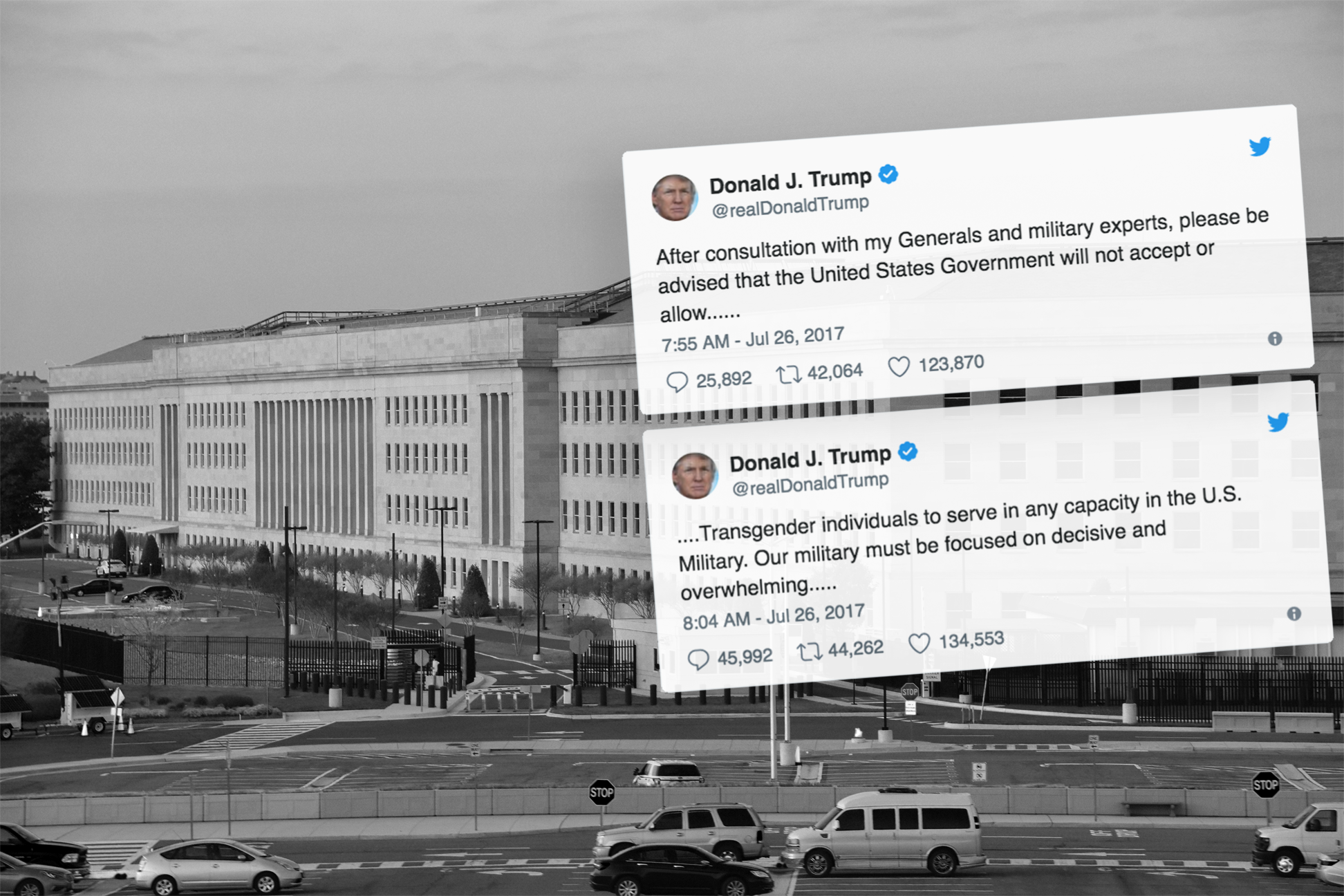
Checking Up on Trump’s Claims that Military Experts Told Him to Ban Transgender Troops
The Supreme Court’s decision on Tuesday to allow the Trump administration to ban most transgender people from military service reignited questions over whether any actual military or national security considerations dictated the discriminatory policy.

The Supreme Court’s decision on Tuesday to allow the Trump administration to ban most transgender people from military service reignited questions over whether any actual military or national security considerations dictated the discriminatory policy.
In late July 2017, in a characteristic example of the president’s setting policy via Twitter, Trump sent out a series of tweets announcing his decision to “not accept or allow … Transgender individuals to serve in any capacity in the U.S. military,” claiming that he arrived at the decision after “consultation with my Generals and military experts.”
American Oversight filed multiple Freedom of Information Act requests across the Department of Defense for evidence of such “consultation” or advice, and received a response from the Army stating that it had no records of any such advice given to the president. When none of the other DOD offices responded, American Oversight filed suit against the department to force the release of any related documents — or to indicate whether other branches of the armed forces had, like the Army, never actually given Trump the advice he claims he received.
In September 2018, American Oversight received records of emails sent by DOD staff members that showed the extent to which Trump’s surprise Twitter announcement caught many at the Pentagon off guard. In one email exchange, the official who oversees the office that would handle such a personnel policy change wrote, “Wow – that was a surprise?” followed by “Unbelievable!!”
The Supreme Court’s 5–4 ruling did not address whether the ban was legal, but allows it to go into effect while lower courts consider arguments. American Oversight’s investigation into the extent to which Department of Defense officials were involved in the president’s decision, a reversal of President Obama’s 2016 policy allowing transgender people to serve openly.